This easy lemon curd is bright, tangy, super creamy, and perfect for scones, biscuits, or any lemon desserts. With 5 simple ingredients and one pot, you’ll have homemade lemon curd in less than 15 minutes!
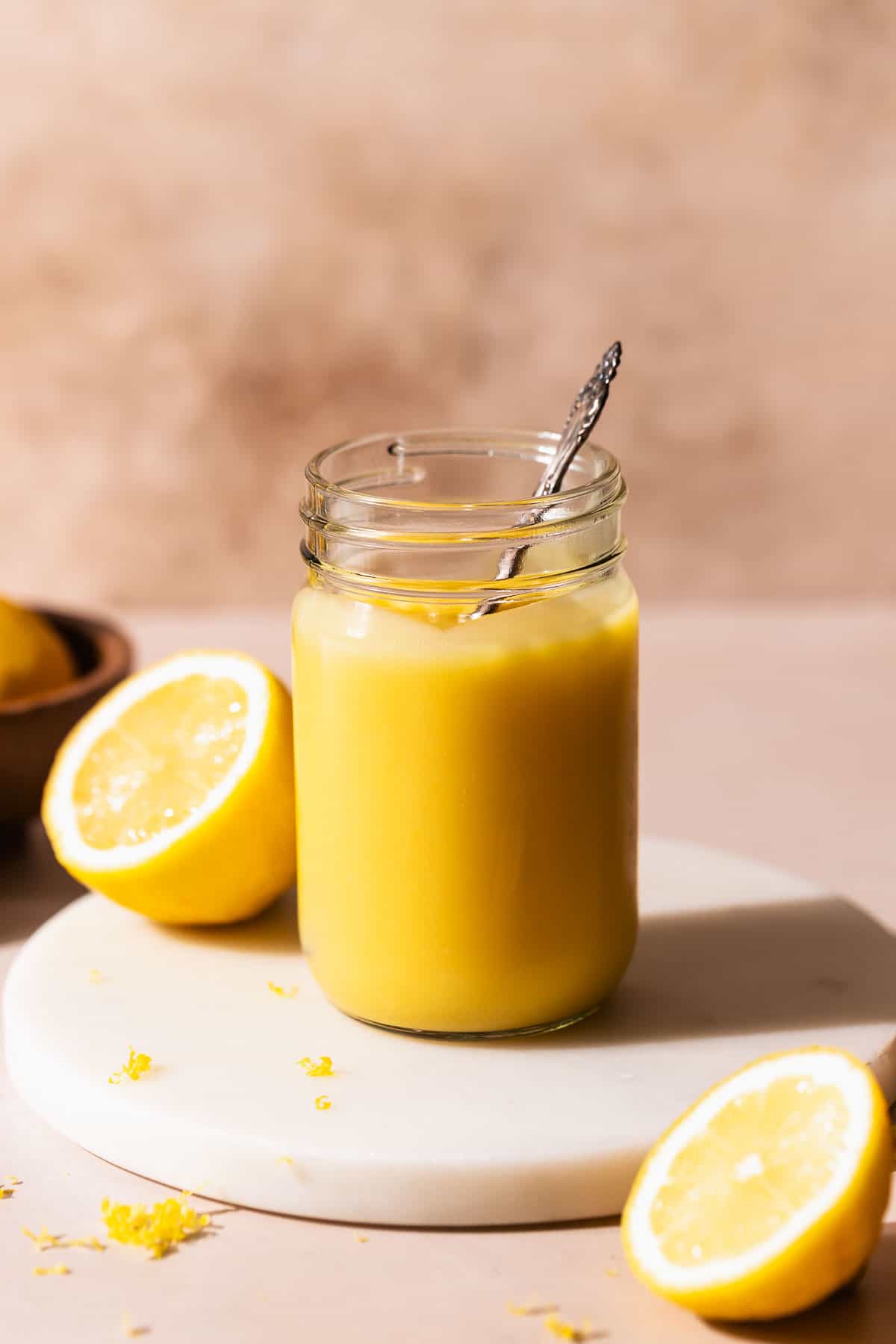
The first thing I learned in pastry school was how to make lemon curd from scratch!
It turns fresh lemons into a super creamy custard-like filling that can be used for many recipes, like lemon poppy seed cake and lemon bar cookies. Store-bought lemon curd doesn’t even compare!!
Table of Contents
What is Lemon Curd?
- Tart and sweet: Lemon curd combines the natural acidity of fresh lemon juice with the sweetness of sugar, creating a not-too-sweet flavor.
- Silky smooth texture: I’m sharing all of my bakery secrets to achieving the creamiest lemon spread. The silky smooth texture of this curd is to die for!
- Simple to make: You only need one bowl, a whisk, and a strainer! No double boiler, corn starch, or special equipment is required.
- Foolproof: With simple ingredients and straightforward instructions, this easy lemon curd is very forgiving so even novice bakers can achieve delicious results every single time!
Ingredient Notes and Substitutions
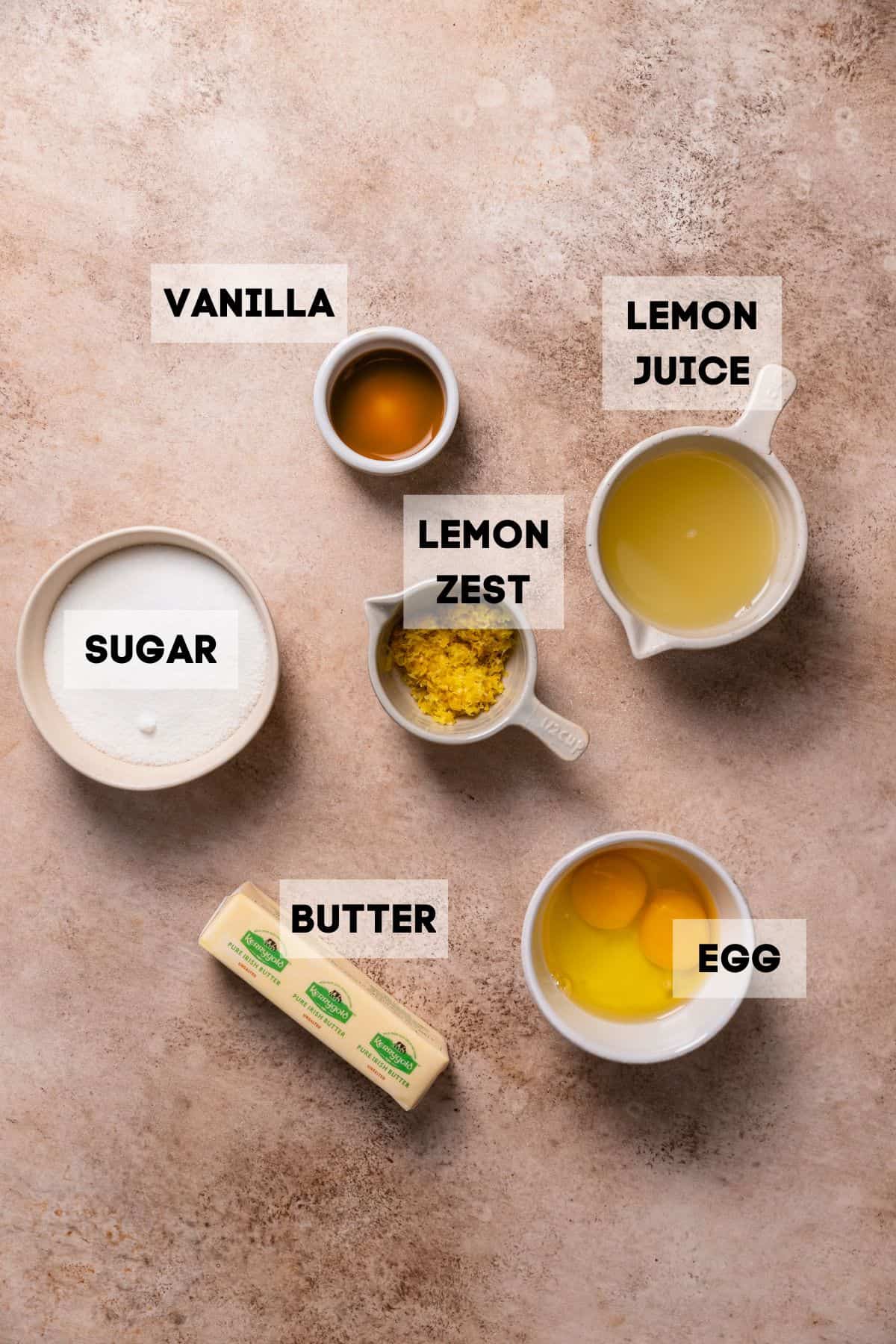
Fresh lemons: Using fresh lemons and fresh lemon zest (NOT bottled lemon juice) is key to a bright citrus flavor. Look for lemons that are an even bright yellow color. You can also use Meyer lemons!
Whole eggs: I know it can be annoying to have extra egg whites lying around, so this recipe was developed to use whole eggs instead! No extra egg yolks are needed.
European butter: The key to bakery-style lemon curd is using European butter! It has a higher fat content which gives the citrus curd a rich, buttery, and creamy consistency.
Sugar: The sugar adds sweetness and balances the tartness of the acidic lemon juice. Sugar also stabilizes the custard, helping it to thicken and keeping the eggs from curdling.
Vanilla extract: Pure vanilla extract is recommended for the best lemon curd. For even more flavor, use vanilla bean paste!
Find the full list of ingredients, measurements, and instructions in the recipe card below!
Flavor Variations
You can make other citrus curds other than lemon:
- Orange curd: Use fresh orange juice and zest. Try it with navel oranges, blood oranges, or mandarin oranges!
- Lime curd: Use fresh lime juice and zest.
- Grapefruit curd: Use fresh grapefruit juice.
Recipe Instructions
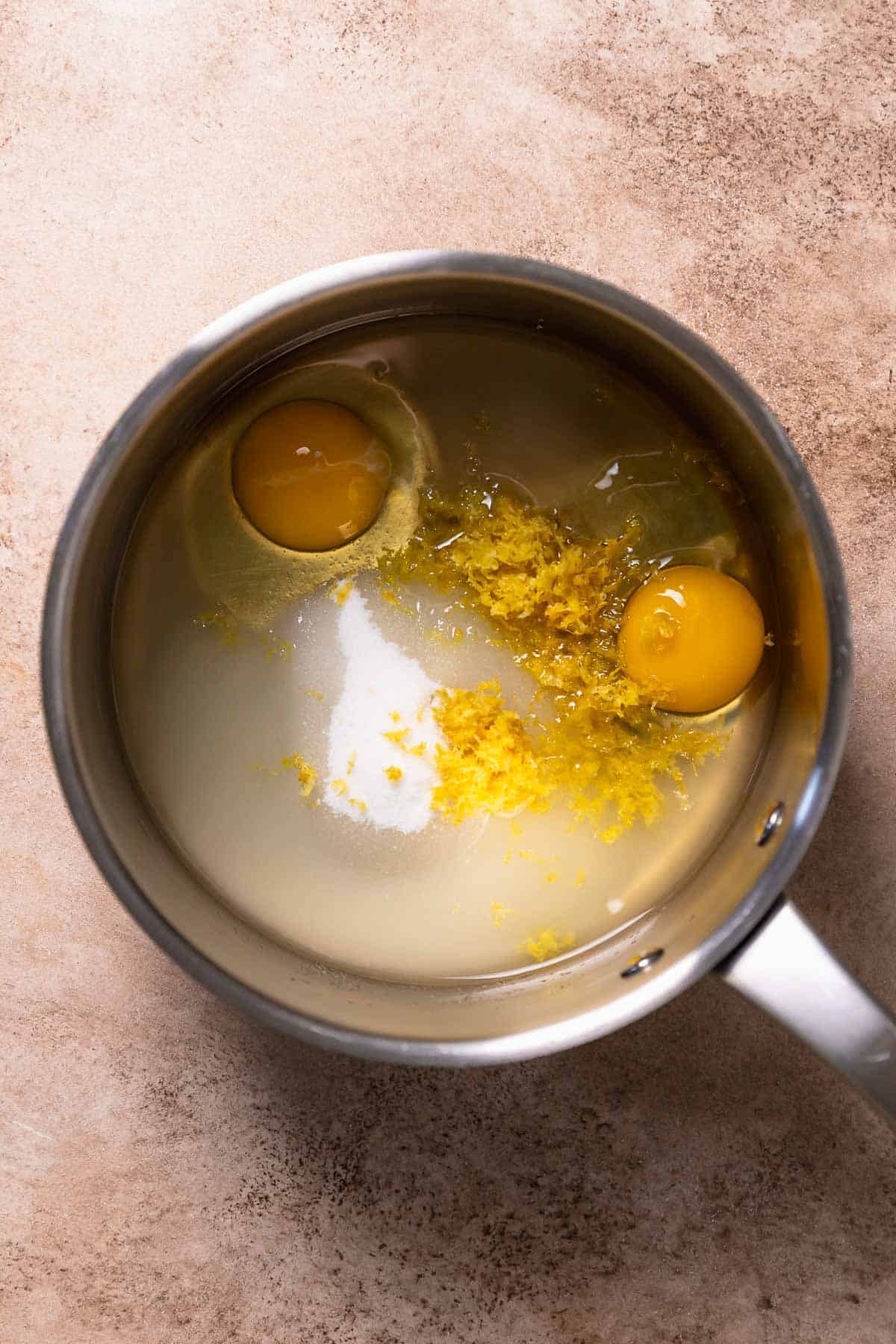
Step 1: Combine the ingredients. In a small pot, whisk together the eggs and sugar, then whisk in the lemon juice, lemon zest, and a pinch of salt.

Step 2: Cook over gentle heat. Stirring constantly, cook the curd over medium-low heat until the mixture thickens, reaches 170 F/78 C, and coats the back of a spoon. In the pastry world, this is known as nappe!

Step 3: Strain the curd. Immediately remove the pan from the heat and pour the lemon filling through a fine mesh strainer to remove any lumps and zest.
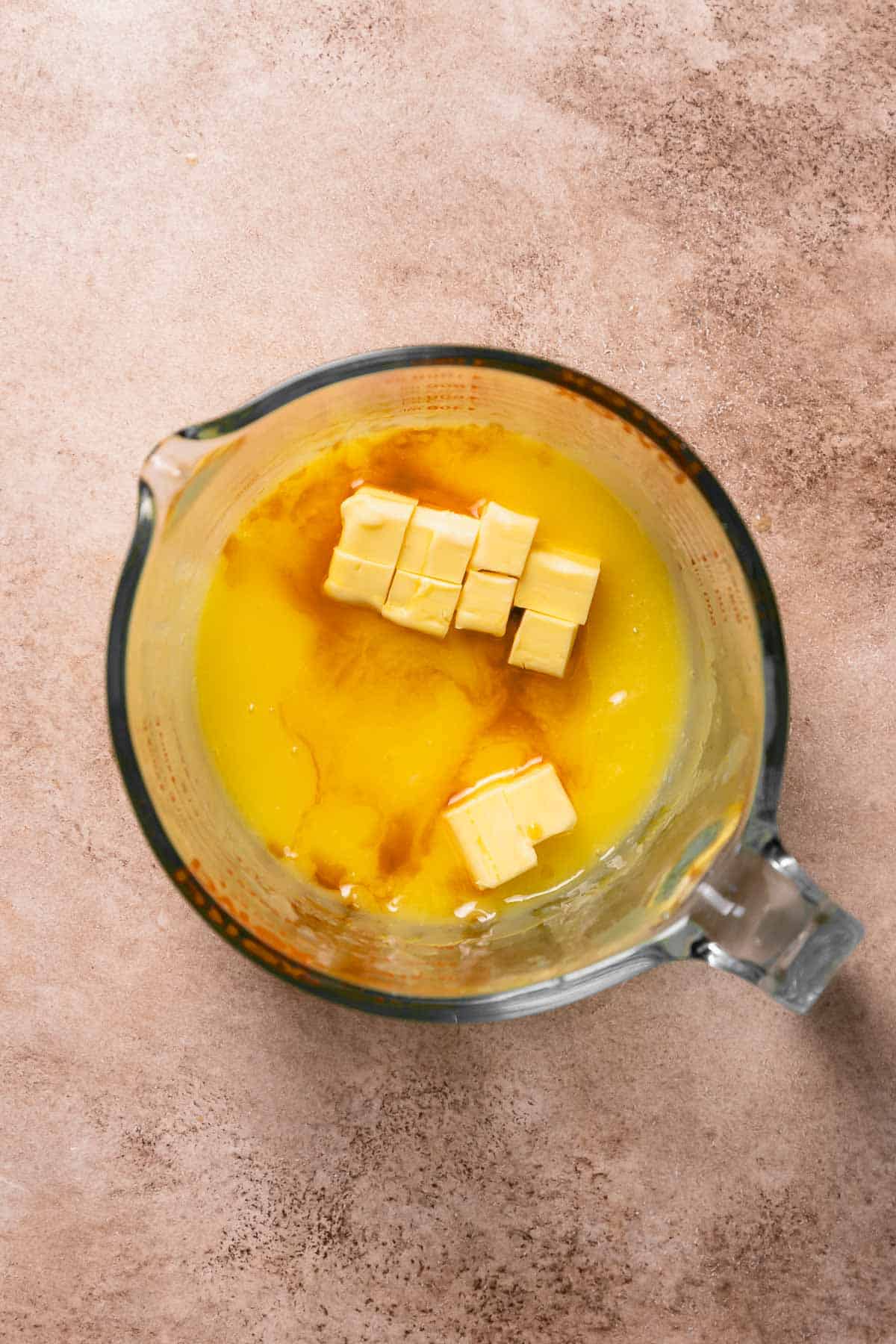
Step 4: Stir in the butter. Stir in the cold butter and vanilla extract until completely melted.
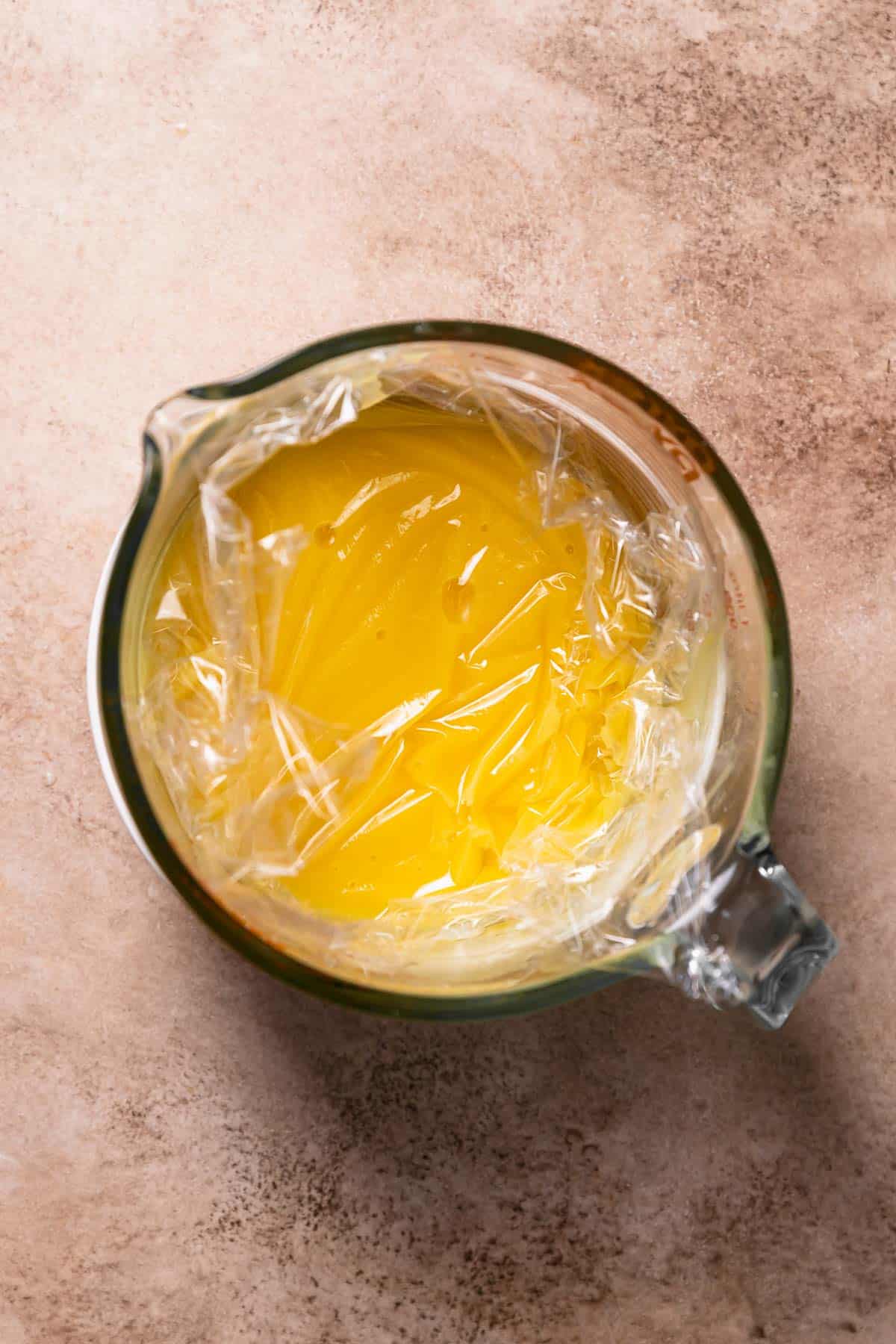
Step 5: Cover with plastic wrap. Place a piece of plastic wrap on top touching the surface. This will prevent dry skin from forming, which can make your smooth curd look lumpy.
Chill in an ice bath for 20 minutes.

Step 6: Chill before using. Pour your glossy lemon curd into a glass container and chill in the fridge until ready to use!
Storage and Freezing
Storage: Store lemon custard in an airtight container, specifically a glass mason jar. It can be refrigerated for up to 1 month! Because the acidity in lemon juice can react with metal, I don’t recommend storing it in any metal bowl or container.
Freezing: Lemon curd can be frozen for up to 3 months. Let it defrost in the fridge overnight before using, and consume it within 4 weeks.
Using it in Recipes
This easy lemon curd recipe can be used in many ways and is delicious enough to eat with a spoon! Here are some of my favorite ways to use it:
- Drizzle it on top of yogurt with granola and fresh berries.
- Drizzle it on top of vanilla ice cream.
- Serve it on homemade pancakes or crepes.
- Use it as a lemon filling for cakes, cupcakes, or my lemon sweet rolls!
Tips for the Best Lemon Curd
Stir in cold butter at the end. While most recipes call for room temperature or softened butter, cold butter cools it down and creates a silky smooth and creamy lemon curd. I learned this tip working as a pastry chef!
Chill before using. This is especially important if you are using it as a cupcake or cake filling, like lemon bar cake and lemon poppy seed cupcakes. As the lemon curd chills, the butter will solidify and thicken the texture, so it’s easier to work with.
Rub the lemon zest into the sugar. This extra step releases the natural essential oils in the zest for even more lemon flavor!
Cook over gentle heat. This is very important because the eggs can easily curdle and turn into scrambled eggs! Don’t be tempted to turn the heat up any higher than a medium-low heat.
FAQs
Avoid using any metal utensils and pots that aren’t stainless steel or ceramic. The acid in the lemon juice can react with metal, producing a metallic aftertaste.
It will stay fresh for up to 1 month in the fridge!
I do not recommend it. Using it can result in a less vibrant and complex flavor. You also risk it tasting artificial due to the lack of fresh citrus essence.
Absolutely! It may need a few minutes longer to cook.
It may not be set if the curd isn’t cooked long enough or the ingredients are incorrectly measured.
Yes, lemon curd can be overcooked, resulting in curdling or a grainy texture.
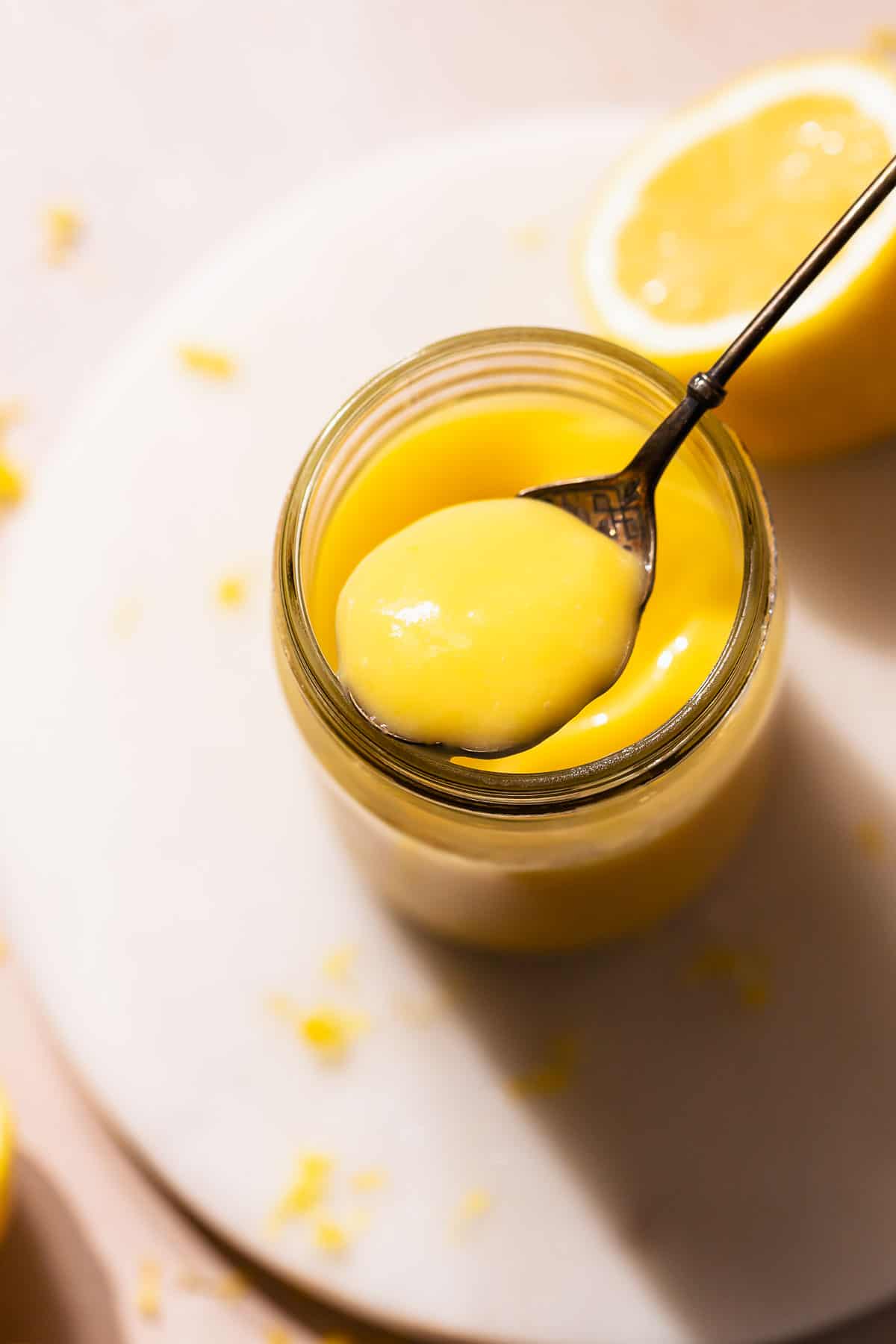
More Lemon Lover Recipes
- Fudgy lemon brownies
- Lemon blondies
- Lemon raspberry muffins
- Lemon berry mascarpone cake
- Lemon poppy cookies
If you tried this or any other recipe on my website, please let me know how it went in the comments below, I love hearing from you! Also, please leave a star rating while you’re there! You can also tag me on Instagram or Facebook so I can check it out!
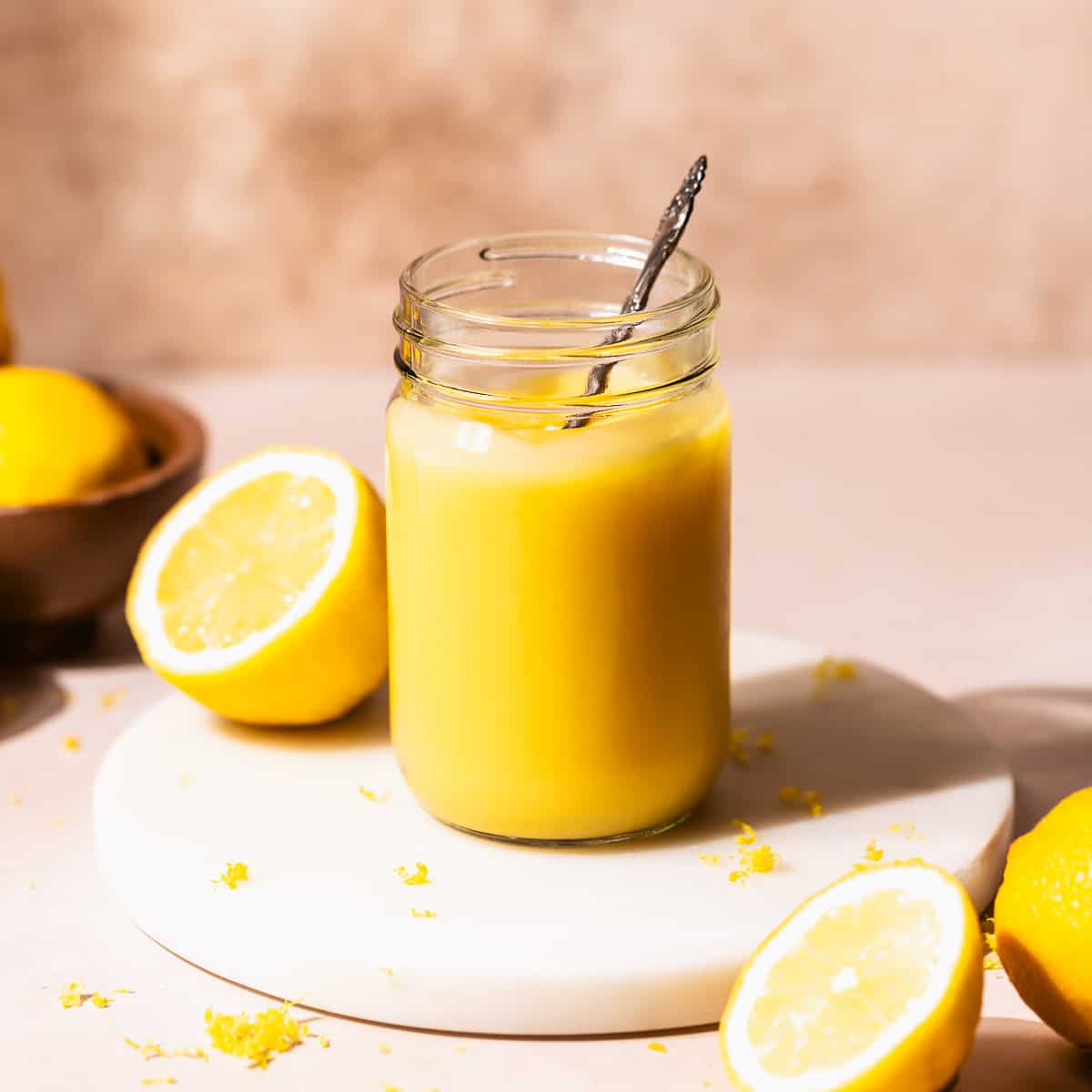
Easy Lemon Curd
Ingredients
- 1/2 cup granulated sugar
- 1 tablespoon + 1 teaspoon fresh lemon zest
- 2 whole large eggs
- 1/2 cup fresh lemon juice
- Pinch fine sea salt
- 5 1/2 tablespoons unsalted butter, cold
- 1 teaspoon pure vanilla extract
Instructions
- Rub the lemon zest into the sugar until it resembles wet sand.1/2 cup (100 grams) granulated sugar, 1 tablespoon + 1 teaspoon fresh lemon zest
- Add it to a pot and whisk in the eggs. Then whisk in the lemon juice and salt.2 (100 grams) whole large eggs, 1/2 cup (113 grams) fresh lemon juice, Pinch fine sea salt
- Cook over medium-low heat for 8-12 minutes, stirring constantly, until the lemon curd temperature reaches 170F/78C, looks vibrant yellow, and is thick enough to coat the back of a spoon.
- Pour the curd through a fine mesh strainer into a clean bowl.
- Stir in the cold butter and vanilla extract until combined.5 1/2 tablespoons (77 grams) unsalted butter, 1 teaspoon pure vanilla extract
- Cover the top with plastic wrap so that it touches the surface of the curd. This will prevent any dry skin from forming. Set the bowl in an ice bath to cool for 20 minutes.
- Then pour it into a clean glass mason jar and chill in the fridge until ready to use. It will be thinner after cooling but will thicken in the fridge when the butter re-solidifies.
- Serve cold or hot on yogurt, pancakes, ice cream, or crepes. You can also use it as a filling for cakes or cupcakes! Store any leftover curd in the fridge for up to 1 month or 3 months in the freezer.
Video
Notes
The calorie information provided for the recipe is an estimate. The accuracy of the calories listed is not guaranteed.







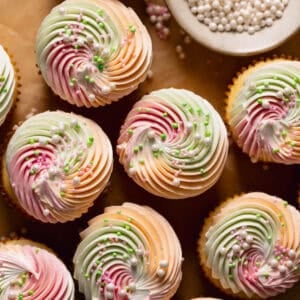
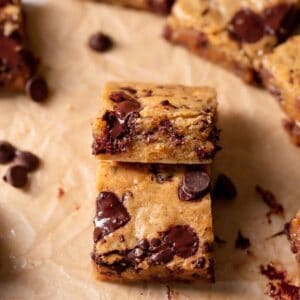








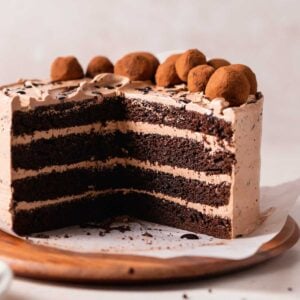



Delicious! An so easy. Perfect way to use up all of my fresh grown lemons!